
IMPACT REPORT 2024

A Note To Our Community.
With approximately one third of global greenhouse gas emissions1 attributed to agriculture, a looming plastic pollution crisis 2 , and the threat of only 60 harvests remaining 3 due to soil mismanagement, the urgency for transformative action is indisputable.
3
Image Left: Miscanthus grown in Venore, TN
“At Better Earth, we acknowledge the profound opportunity the foodservice industry has to make a difference for our environment.”
Better Earth is on a mission to pioneer plant-based packaging solutions that make sustainability accessible and regenerative circularity achievable for the foodservice industry. It’s linear thinking that got us into this mess, and it will only be through active participation and collaborative partnerships that we navigate our way out.
As we reflect on the past year, two key developments have profoundly shaped our approach to creating impact. First was our investment in developing the expertise necessary to propel our impact, and subsequently building the scaffolding necessary to support our growing team. This included launching our Staff Equity Program and a suite of 15+ progressive policies and benefits.
The second was honing in on how we are best suited to act on the biggest challenge of our generation: climate change. We firmly believe that our business should be our first and primary driver for realizing our mission. And by default, all Better Earth products represent rapidly renewable plant-based alternatives to petroleumbased single-use plastics. But starting in 2023, we’ve taken it a step further. Starting with the Farmer’s Fiber Collection, we are analyzing each of our product lines’ environmental footprint, building carbon reduction plans and offsetting what remains. The life cycle assessment of the Farmer’s Fiber Collection revealed a carbon footprint 66% lower than the industry standard PET packaging.
Transparency has long been a guiding principle at Better Earth. We take pride in sharing where we are, who we are and our areas for improvement. And in our third annual Impact Report, we’ve compiled the full story with you in mind, and are committed to continuously update and redistribute the report annually.
~ Savannah Seydel VP of Sustainability
IMPACT REPORT 2023 | A NOTE TO OUR COMMUNITY
Image Left: Savannah Seydel, VP of Sustainability


Creating Access
At Better Earth, we believe that increasing participation in compostable packaging is an important catalyst for creating access to composting infrastructure, and ultimately saving our soil.
So how do we get more people to participate? To start, through product innovation that meets operators’ needs, building efficiencies across operations, and expanding customer support. See more throughout the Impact Report.
60 New Products Launched in 2023
60% Larger Better Earth Team 2
Additional distribution hubs onboarded across North America to drive efficiencies, reduce customer lead times, and lower carbon footprint. Image Left:
7
Switchgrass grown in Venore, TN
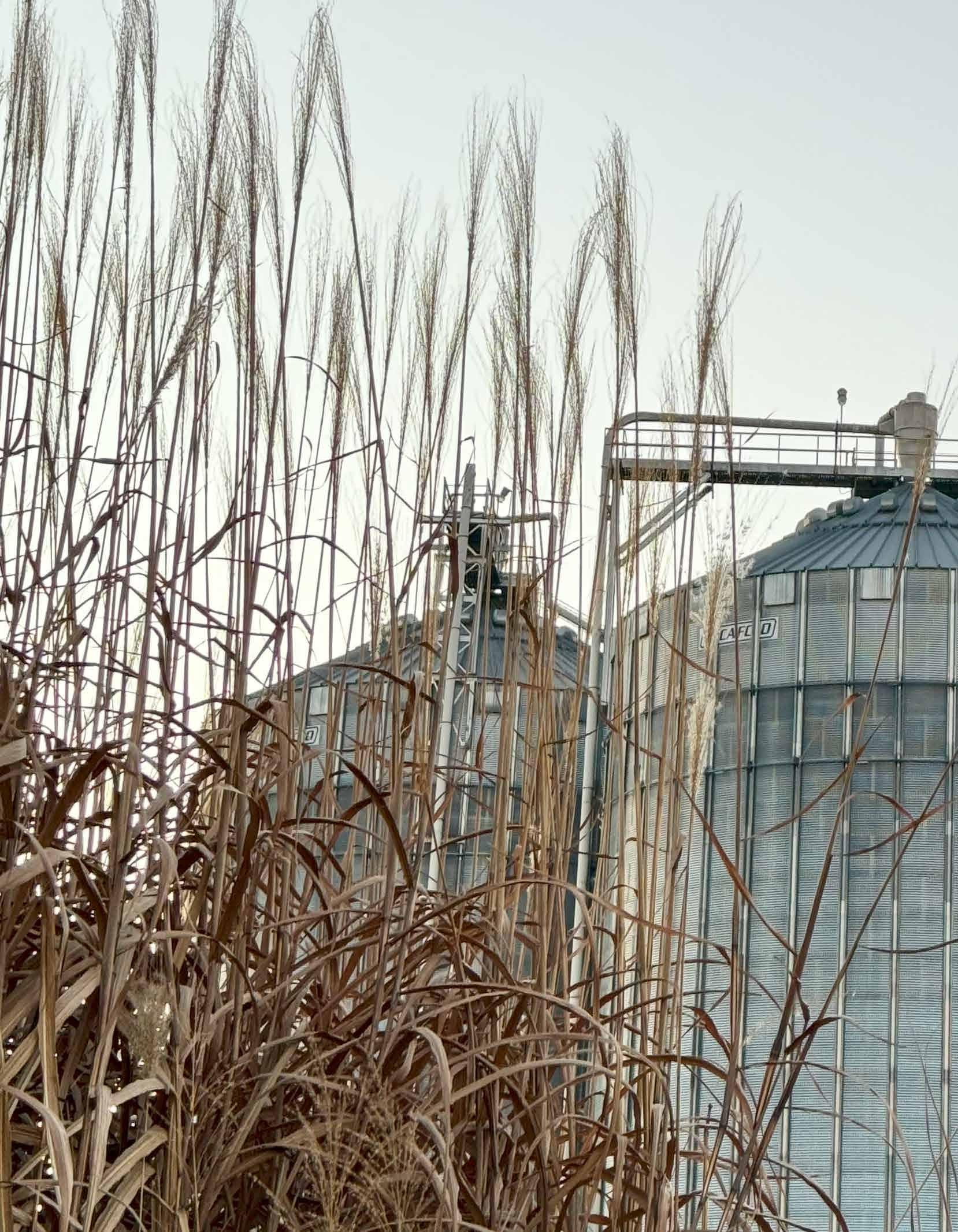

As an industry at large, 2023 was a formative year as well.
• Truth in Labeling Laws passed in states across the country to streamline labelling for compostable packaging and regulate greenwashing.
• Extended Producer Responsibility Bills maintained steam, as several states formalized Stakeholder Advisory Committees and Needs Assessments.
• And the compost industry got a shot of adrenaline this year thanks to $11.8 million allotted by the USDA to composting and food waste projects across the country.
FPO
Image Left: Genera Mill Silos Venore, TN
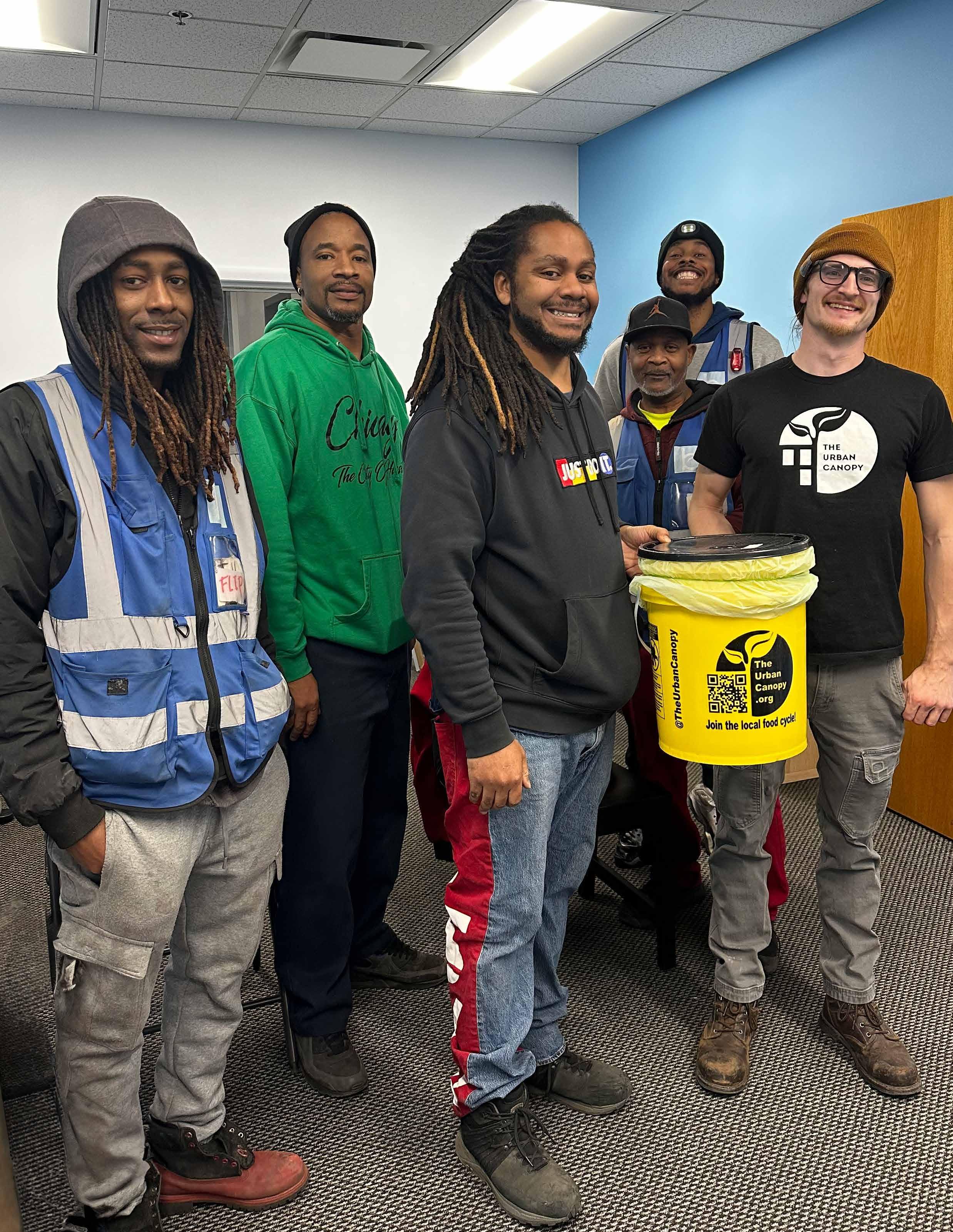
People
People
We prioritize people above all else. Our aspirations and ambitions come to fruition when we lead by example, starting from within.
60% Of the Better Earth Team are Women and/or Minorities
91 Volunteer Hours Collectively Logged by the Better Earth Team
$34,000 Dollars Donated to Community Organizations
11
Image Left: Better Earth Chicago Operations Team participates in composting training with The Urban Canopy, composting program.
A spirit of inclusivity permeates every aspect of our organization.
This mission is people-powered. We have institutionalized our vision and values across our organization’s culture and systems thanks to our diverse workforce and progressive benefits program. This ethos extends to Better Earth’s broader network of Supply Partners and stakeholders. And we remain active in the communities we serve through volunteering, donation programs, and fostering closed loop community events.
Regenerative Workplace
• A comprehensive Parental Leave program was established and is accessible to all parents.
• We have established a Volunteer Time Off Policy, where salaried employees are allotted paid time off for volunteering.
• An Equity Program was implemented for salaried employees.
Good Governance
• The average tenure of relationships with Supply Partners is greater than 5 years.
• All significant supply partners signed Better Earth’s Supplier Code of Conduct – holding suppliers accountable for social and environmental performance.
Community Engagement
• In-kind donations, employee support, and volunteer hours were provided to charitable organizations and initiatives that embodied Better Earth’s values.
Learn more on pages 16-17.
IMPACT REPORT 2023 | PEOPLE
Images Left: Various Better Earth employees

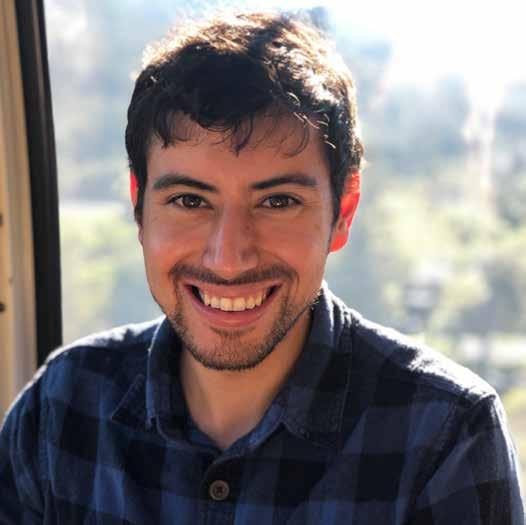


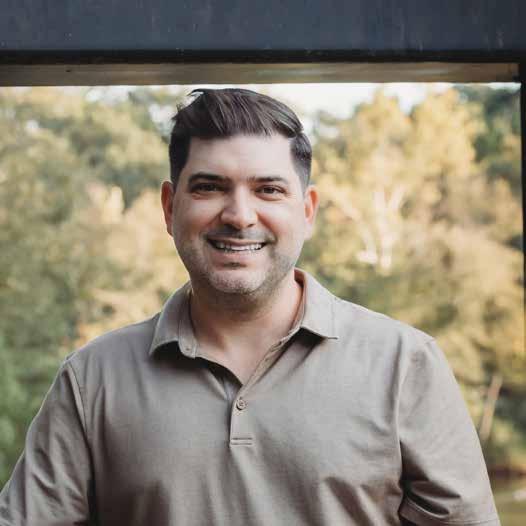
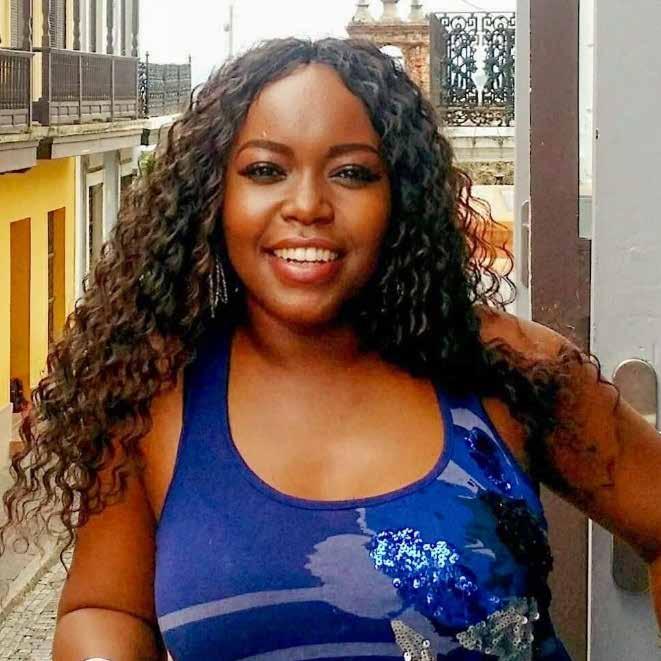

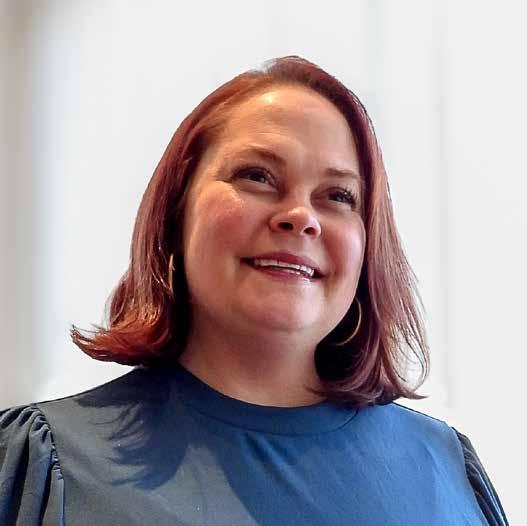



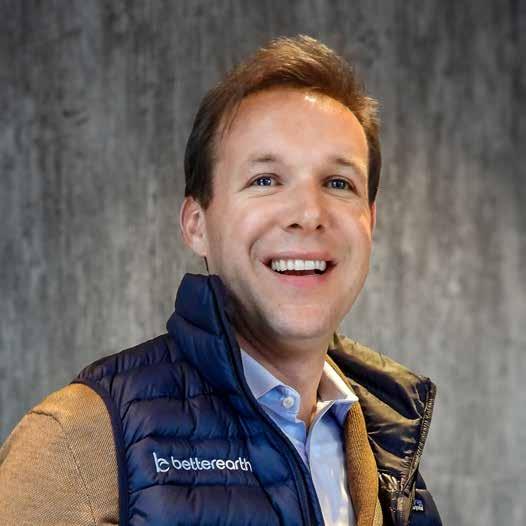



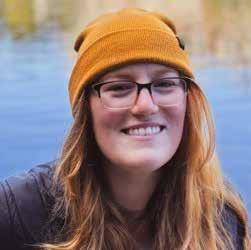


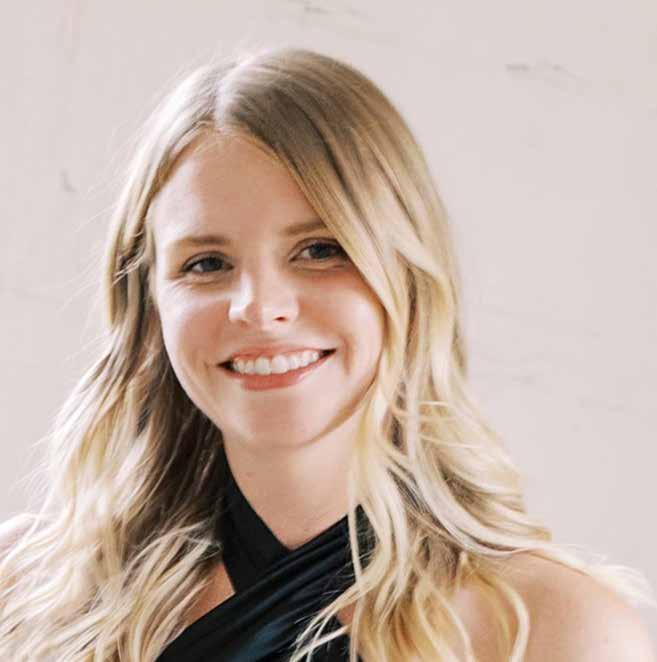
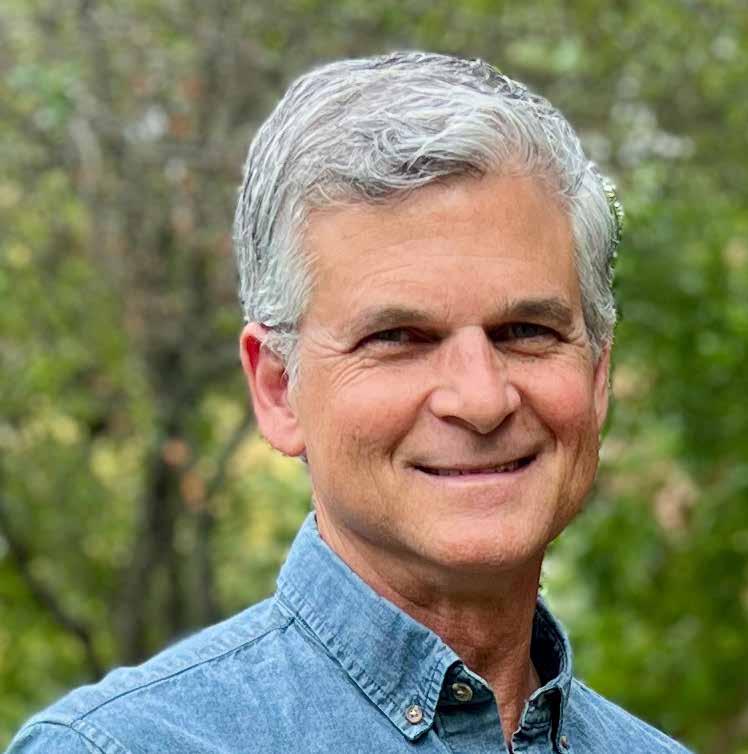
13
Building Bridges, Breaking Ceilings: Atlanta Women in Sustainability
In 2022, the Better Earth Sustainability Team spearheaded a new network in Atlanta to elevate female leadership in sustainability across the city. Atlanta Women in Sustainability has grown exponentially in the years since, with 200+ women engaged in the network and regular quarterly events around Atlanta. It has continued to be a hive for building connections, supporting others, and helping build pathways for success for young professionals.
 Image Right: Atlanta Women in Sustainability Q1 Panelists
Image Right: Atlanta Women in Sustainability Q1 Panelists
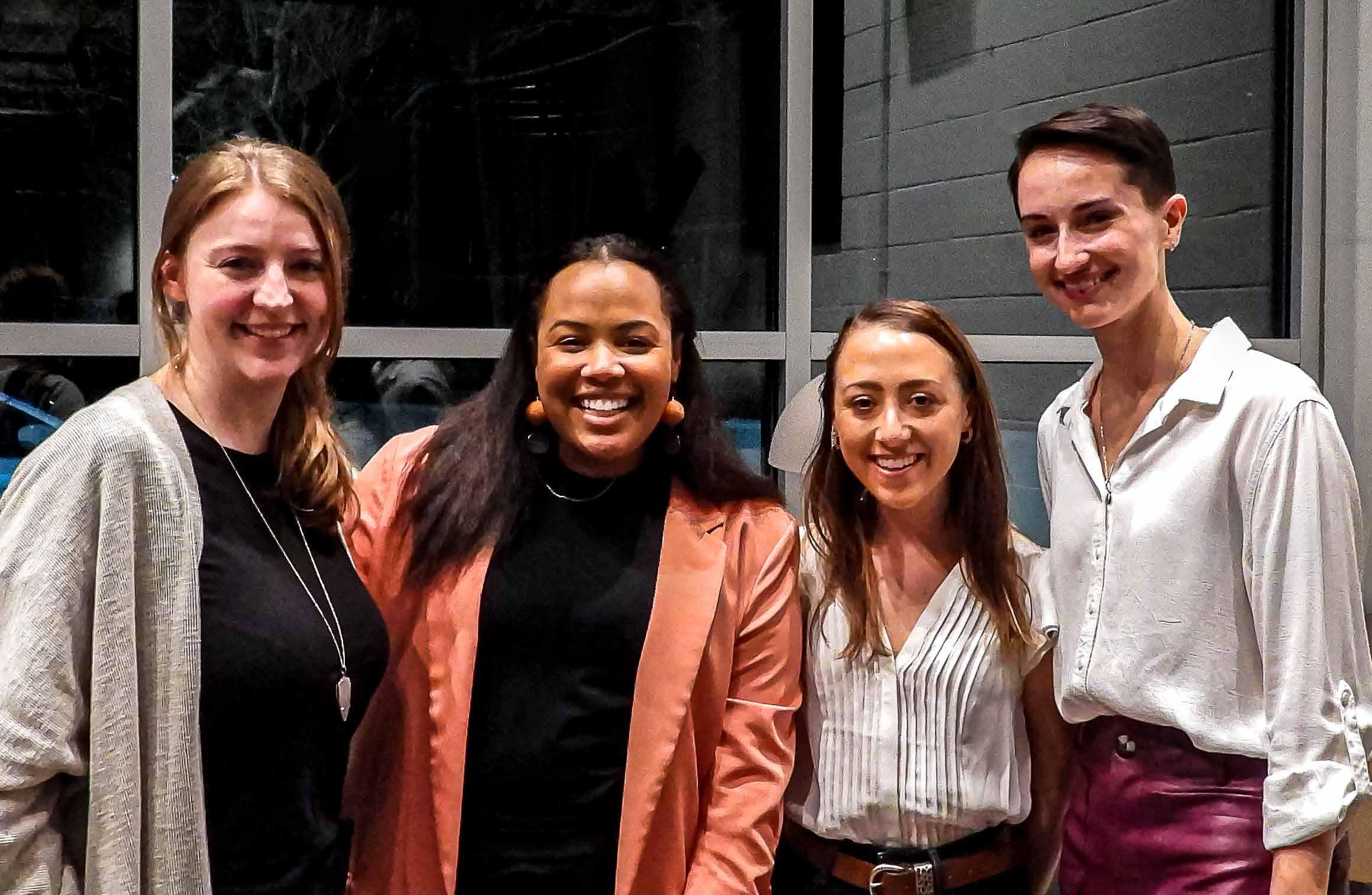
Project Dandelion Takes Root at TEDWomen with Better Earth’s Support
The TEDWomen Conference continues to be a powerful platform for female leaders to tackle social issues and global challenges. With over 40 inspiring speakers and 1,500 attendees coming together for the 2023 event in Atlanta, Georgia, Project Dandelion, the first global women-led campaign for climate justice found fertile ground to reach new audiences.
Better Earth played a key role in amplifying Project Dandelion’s message. By donating 100% compostable and custom-printed cups featuring both logos, Better Earth ensured all TEDWomen participants encountered Project Dandelion’s call to action for a climate-safe future with every sip.
15
Image Left: Custom Printed TEDWomen Conference Cold and Hot Beverage Cups
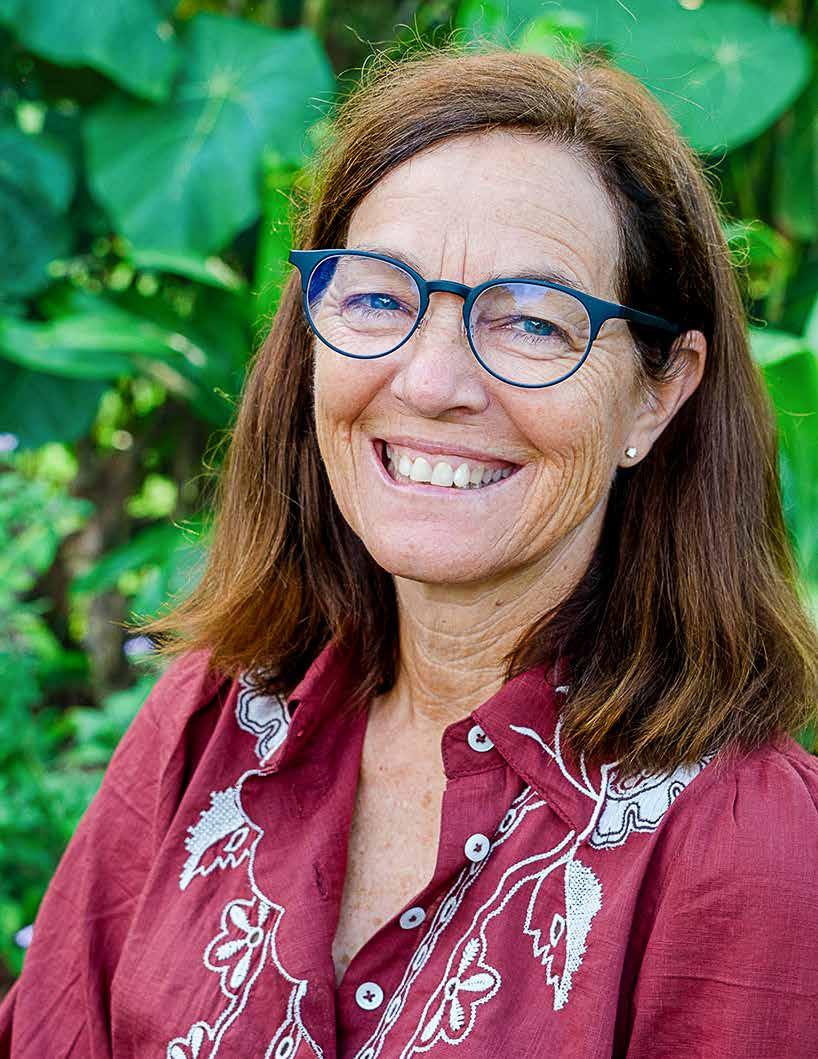
“...Our first thought was what can we do? How can we get stuff into the hands of the people who need it? I sent an e-mail to different manufacturers, and the response from Better Earth was incredible.”
Rebuilding Resilience: Compostable Packaging Donations for Hawaii’s Recovery
Better Earth shared in the grief felt around the world as we watched Oahu burn. Victims included Better Earth partners, customers and friends. We quickly channeled our grief into action by engaging local distributor Sustainable Island Products on what was needed for immediate aid. In total, Better Earth donated over $29,000 in compostable packaging to support relief efforts and ensure sustainable options remained accessible precisely when needed most.
“I just feel extremely, extremely fortunate that we have these kinds of partnerships. I don’t think we could ever forget how
much of a gift it was that you guys stepped up and performed like you did. Thank you very much from the bottom of my heart and [for] what you made possible in this grassroots effort. And now we have to pay it forward. That is what sets you and us and other companies apart...not just looking at our bottom line but looking at what as a company is the right thing to do for our communities.”
~ Julie Elkjer President of Sustainable Island Products
17
Image Left: Julie Elkjer, President of Sustainable Island Products
Goals for 2024
Ethical Supply Chain Practices
Significant Supply Partners represent 80+% of Better Earth’s non-labor expenses. By 2024, 100% of suppliers will sign the Better Earth Supplier Code of Conduct.
Volunteering
In 2024, we seek to serve 200+ collective volunteer hours.
 Image Right: Better Earth Team Members Volunteer at Truly Living Well Center for Natural Urban Agriculture Compost Lab
Image Right: Better Earth Team Members Volunteer at Truly Living Well Center for Natural Urban Agriculture Compost Lab
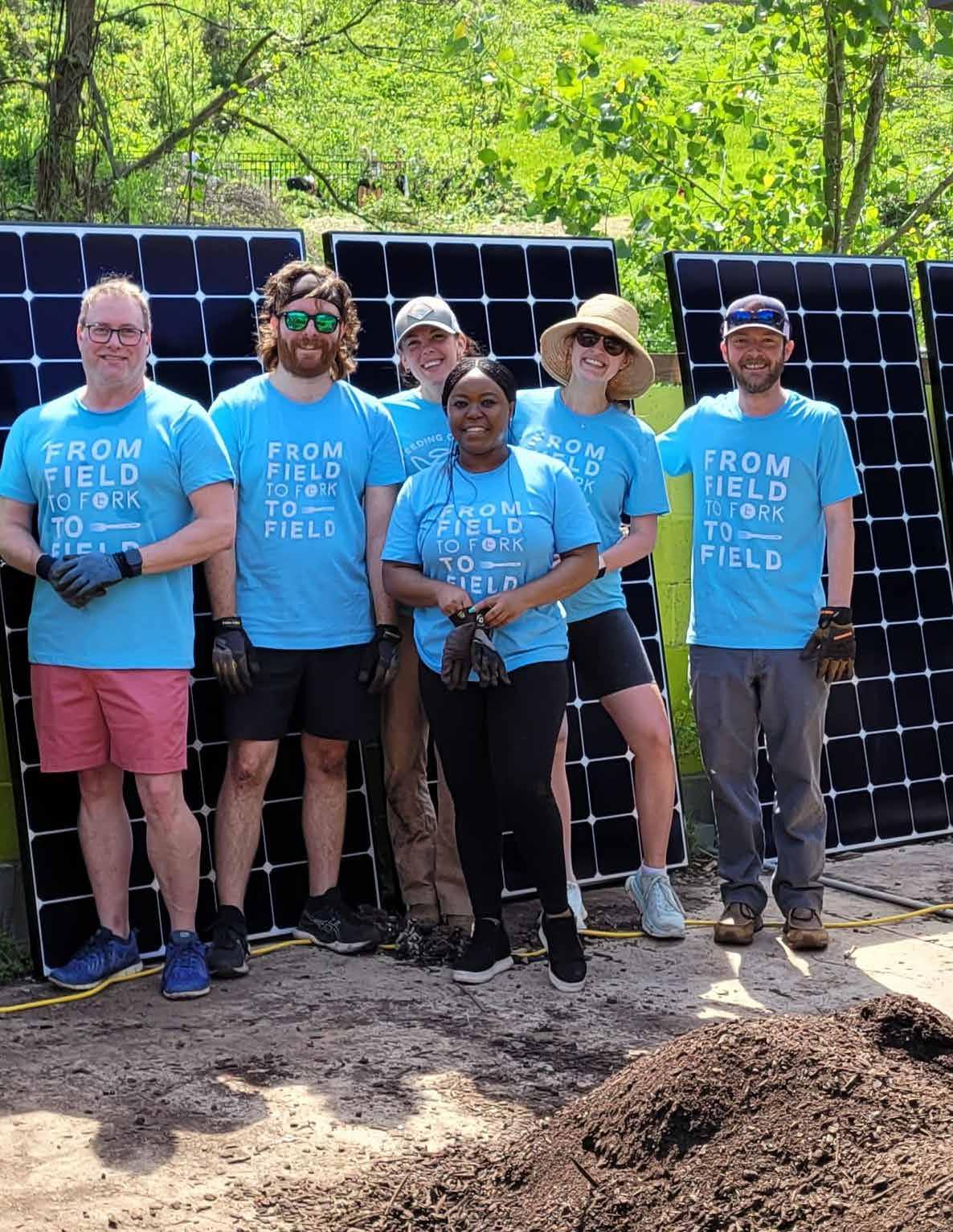
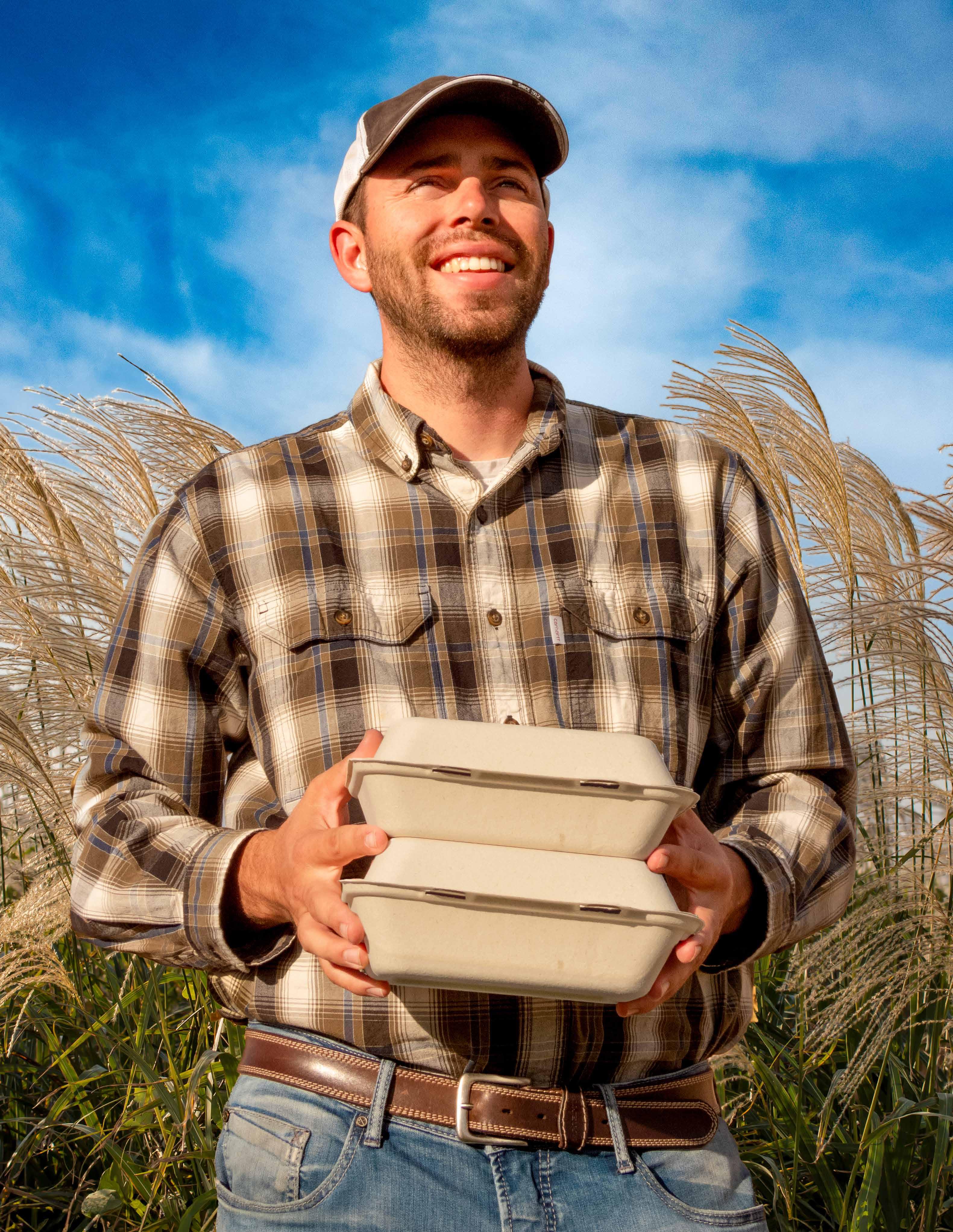
People
Product Compostable packaging is a catalyst. Made from rapidly renewable resources, compostables reduce our dependence on fossil fuels for single-use items.
60
New Products Launched in 2023 Image Left: Farmer’s
66% Our Farmer’s Fiber product line’s carbon footprint is 66% lower than the industry standard PET packaging. 1
21
rapidly renewable 9x9 Clamshells
Fiber
Our packaging is a vehicle to get food waste diverted from landfills and into composting systems where it can cycle back into a nutrient-rich soil amendment.
Third-party certifications – such as those from the Biodegradable Products Institute and the Compost Manufacturing Alliance – are critical for distinguishing compostable products from unsustainable alternatives. Here are our certifying partners:
BPI-certified products undergo rigorous, third-party testing to verify that their products meet ASTM D6400 and/or ASTM D6868 standards (refer to “ASTM D6460” and “ASTM D6868” in our Key Terms). You can always find the latest list of Better Earth BPI product certifications by visiting https://products.bpiworld. org/companies/better-earth.
The Forest Stewardship Council is a not-for-profit organization that sets standards under which forests and companies are certified in order to meet our current needs for forest products without compromising those of the next generation. When you see the FSC label on Better Earth products, you can be assured that the forest products sourced are responsibly harvested and from verified sources.
Like BPI, Vinçotte OK Compostcertified products undergo rigorous, third-party testing to verify that the products are compostable in commercial or municipal facilities in compliance with the European Standard EN 13432.
IMPACT REPORT 2023 | PRODUCT
AS TM D6400 AS TM D6868 CERT #10528603
Image Left: 8 oz. Squat Hot and Cold Food Containers donated to RayDay Atlanta.

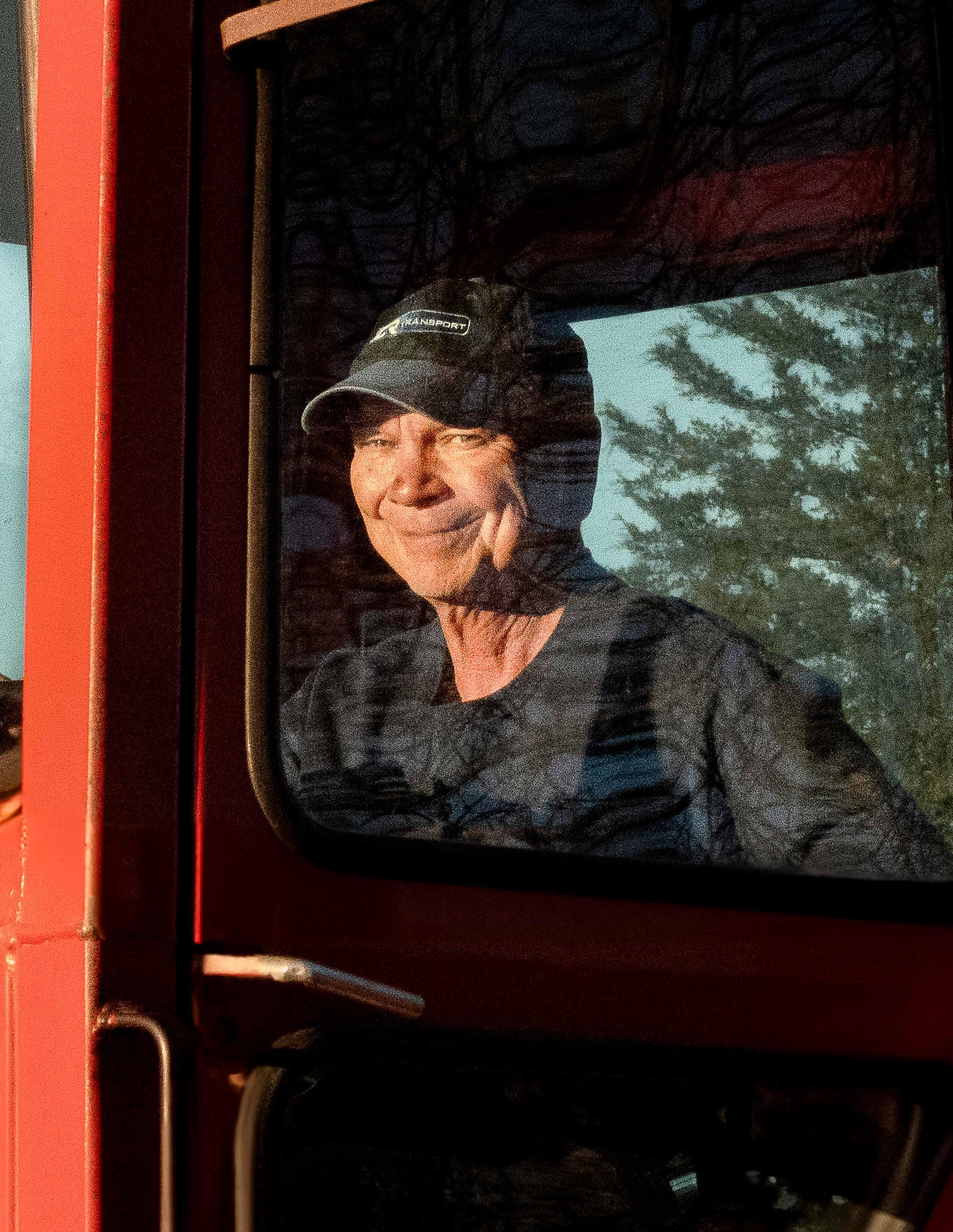
Farmer’s Fiber A Climate Smart Collection
We’ve always known that we should lean on plants, not petroleum, for disposable items. Now we’ve got the data to prove it.
25
Image Left: David Cline one of Genera’s switchgrass farmers.
Initiating this program with our Farmer’s Fiber Collection marks a significant milestone. Having completed the Life Cycle Assessment, we are poised to offset the remaining footprint by Q2.
At Better Earth, our Climate Smart Packaging program represents a comprehensive strategy aimed at mitigating the carbon footprint throughout the packaging life cycle. This includes encompassing sourcing, production, utilization, and disposal.
Here’s our methodology:
1. Conduct Lifecycle Assessment:
Each collection undergoes ISO-compliant Life Cycle Assessments to gauge its environmental impact systematically.
2. Develop Carbon Reduction Plan:
Leveraging insights from the assessments, we establish actionable strategies to minimize the collection’s carbon footprint, setting clear, measurable objectives.
3. Implementing Carbon Offsets:
We procure verified carbon offsets aligned with Better Earth’s overarching philanthropic initiatives to neutralize any remaining environmental impact.
4. Strive for Carbon Negative Status:
Our commitment extends beyond mitigation; we continuously strive to diminish emissions and ultimately achieve carbon negativity year over year.
IMPACT REPORT 2023 | PRODUCT Image Left: Farmer’s Fiber collection of products

The Farmer’s Fiber Collection’s naturally low carbon profile – 0.6kg of CO2e per pound of Farmer’s Fiber Product 4 – is due to the following parameters:
Rapidly Renewable Raw Materials:
The Farmer’s Fiber Collection is made in the USA from perennial grasses that are regenerative in nature. These grasses have deep root systems – up to 10-12 feet deep! – that are ideal for storing carbon and cycling nutrients into the soil. Thanks to minimalistic crop management, the Farmer’s Fiber agricultural process is carbon negative, meaning more than a ton of carbon is stored on every acre, every year.
Efficient Manufacturing Practices:
With manufacturing representing most of our molded fiber packaging’s carbon footprint, we work alongside our partners to drive decarbonization and operational efficiency. Here are a few key initiatives happening at the facility manufacturing our Farmer’s Fiber Collection:
• Hyper-Local Value Chain
• Integrated Pulping and Thermoforming
• LED Lighting Upgrade
• Electric Vehicle Charging Stations
Integration of Clean, Renewable Energy:
Over 50% of the energy required to manufacture this product line is sourced from a blend of clean, renewable sources, including solar, wind, hydro and nuclear.
Low-Carbon Distribution:
Domestic manufacturing and distribution further reduces the overall carbon footprint compared to traditional molded fiber packaging dependent upon an international supply chain.
IMPACT REPORT 2023 | PRODUCT 0.6kg
25 %
DISTRIBUTION & END OF LIFE MANUFACTURING FIGURE

29
-6
AGRICULTURE
% 81 %
1.
FARMER’S FIBER EMISSIONS BY STAGE
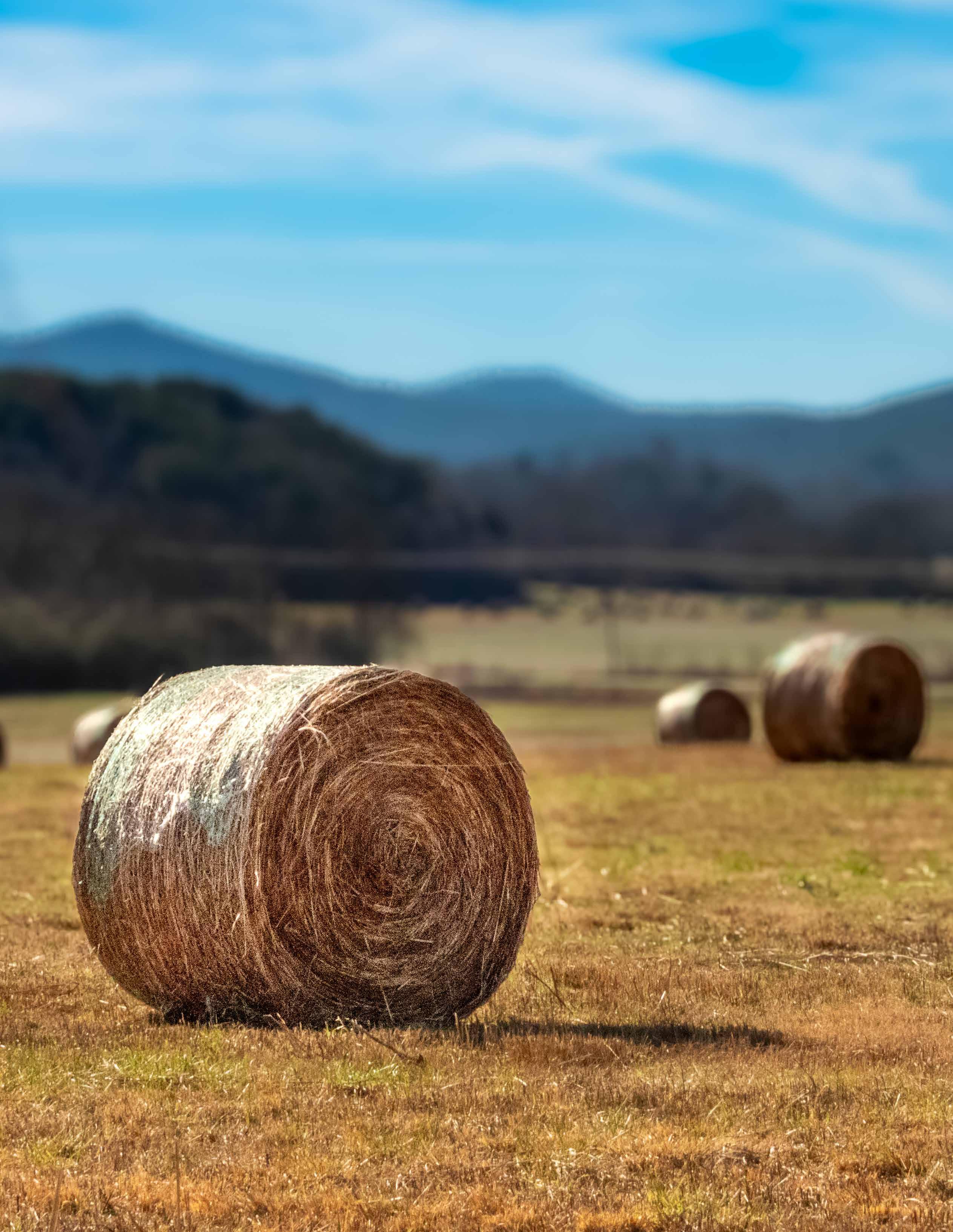
People
Planet Smart and sustainable use of resources, including energy, water, and waste, is paramount. This year, we launched our comprehensive Environmental Management Program to track resource use across the organization and set aggressive goals.
1 Ton of carbon sequestered per acre per year with the Farmer’s
10% lower carbon footprint for outbound distribution through optimizing fulfillment locations.
1,000 pounds of organic material diverted from the landfill through our office composting program.
31
Fiber Collection.
Image Left: Bales of switchgrass in Tellico Plains, TN
We recognize our responsibility as soil stewards from beginning to end of life. We utilize native, perennial substrates for our domestic Farmer’s Fiber Collection. Thanks to regenerative agricultural practices, we sequester one ton of carbon per acre per year and store more water and essential nutrients within the soil.
Soil Stewardship through Raw Material Sourcing:
Our soil is in a dire state. Rapid development and modern agricultural practices seeking higher yields have stripped the land of its nutrients, affecting the health of our ecosystems and ourselves. While we have a lot to lose from depleting our soil, we have that much more to gain from protecting it. Carbon sequestration, higher yields of more nutritious foods, drought mitigation and air filtration are just a few of the many benefits directly tied to replenishing the dirt under our feet.
Waste Diversion:
Better Earth now offers composting for employees at both our Atlanta and Chicago distribution centers. Since the start of the program, our Distribution Centers have diverted over 1,000 pounds of organic material! By reducing the amount of organic waste that ends up in landfills, we are reducing methane emissions, conserving landfill space, and enriching soil for future generations.
Procurement:
Every dollar counts. We’ve embedded our values into our sustainable procurement policy, which guides the organization in prioritizing local, diverse and/ or sustainable vendors. This policy extends across all levels of purchasing. As part of this policy in action, we were excited to debut our cradle-to-cradle tradeshow booth at the National Restaurant Show this year.
IMPACT REPORT 2023 | PLANET
>10 % RENEWABLE
50% of significant suppliers source >10% of energy from renewable sources like solar, wind, and water.
Tackling Scope 3 Emissions in Logistics:
Vehicular miles are a leading barrier to reducing carbon emissions, which on average accounts over 50% of a company’s Scope 3 emissions. Better Earth puts miles on the road getting compostable packaging to customers around the country and around the world, so we have partnered with a team of Georgia Tech students to investigate this primary driver of Scope 3 emissions. Based on the team’s analysis, we are opening new distribution centers in strategic locations, starting with the West Coast. This initiative alone has led to an 86% reduction in the carbon footprint to service West Coast customers and a 10% reduction organization-wide, equal to protecting 158 acres of US forests in 1 year or planting over 2,500 tree seedlings.
Supply Chain Engagement:
The compostable packaging manufacturing process is the most carbon-intensive stage of the packaging’s lifecycle. Therefore, participation among suppliers is crucial for overall carbon reduction goals. This year, all Better Earth’s Significant Supply Partners participated in an environmental questionnaire to understand their progress against shared sustainability goals to give Better Earth an informed baseline. Through 2024, we will analyze the results and determine a Supplier Sustainability Action Plan with meaningful next steps to support lowering the environmental footprint of our manufacturing process.

33
Goals for 2024
Waste Diversion
We’ve got big goals for 2024! We intend to recycle or compost 95% of standard recyclables and organics across operations by the end of the year, and will be running a competition across Distribution Centers to see who will stand out as the Zero Waste Champion.
Procurement
In 2024, we will begin measuring total spend with local, small and/or minority vendors, with the goal of at least 25% of total spend.
Supply Chain Engagement
Engage 100% of Better Earth’s Supply Partner Network in the environmental questionnaire and develop Supplier Sustainability Action Plan.
 Image Right: Better Earth Team Members Volunteer at Truly Living Well Center for Natural Urban Agriculture Compost Lab
Image Right: Better Earth Team Members Volunteer at Truly Living Well Center for Natural Urban Agriculture Compost Lab

FPO

Partners & Progress
People
We can’t do it alone. We are proud to partner with incredible organizations across our value chain and the environmental movement to accelerate our collective progress towards regenerative circularity.




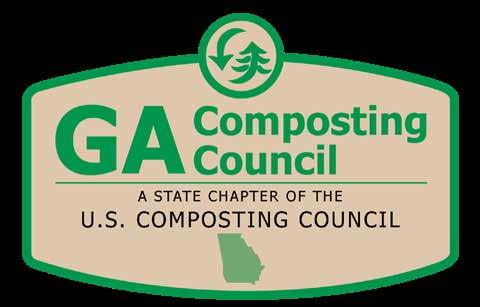

37
Image Left: Aglanta Eats 2023 vendor poses with curated food in donated Better Earth food serviceware
CERT #10528603
Closing the Loop with CompostNow: Better
Earth is proud to partner with composters like CompostNow to distribute compostable packaging as a tool to reduce contamination and expand participation in composting.
We work across our value chain to help close the loop on our packaging and create more access to composting infrastructure.
Better Earth is proud to partner with composters like CompostNow to distribute compostable packaging as a tool to reduce contamination
and expand participation in composting. CompostNow is the Southeast’s leading commercial composting provider servicing homes and businesses across Atlanta, Charleston, North Carolina’s Triangle Region, and Cincinnati. In 2023 alone, their members diverted over 17 million pounds of food
waste from landfills. These scraps were converted into nutrient-rich compost, of which 1 million pounds were distributed at no cost to local growers through their Compost Giveback and Garden Partner Program. For more information, check out their 2023 Impact Report.
IMPACT REPORT 2023 | PARTNERS & PROGRESS Image Left: CompostNow Employee Photo Courtesy of CompostNow

Goals for 2024
Partners & Progress
Over the next three years, work with our customers to divert as much weight in organics as we sell in compostables.
 Image Right: Taylor Voraphongphibul educating Better Earth Team Members and brokers on commercial composting, at a CompostNow facility
Image Right: Taylor Voraphongphibul educating Better Earth Team Members and brokers on commercial composting, at a CompostNow facility
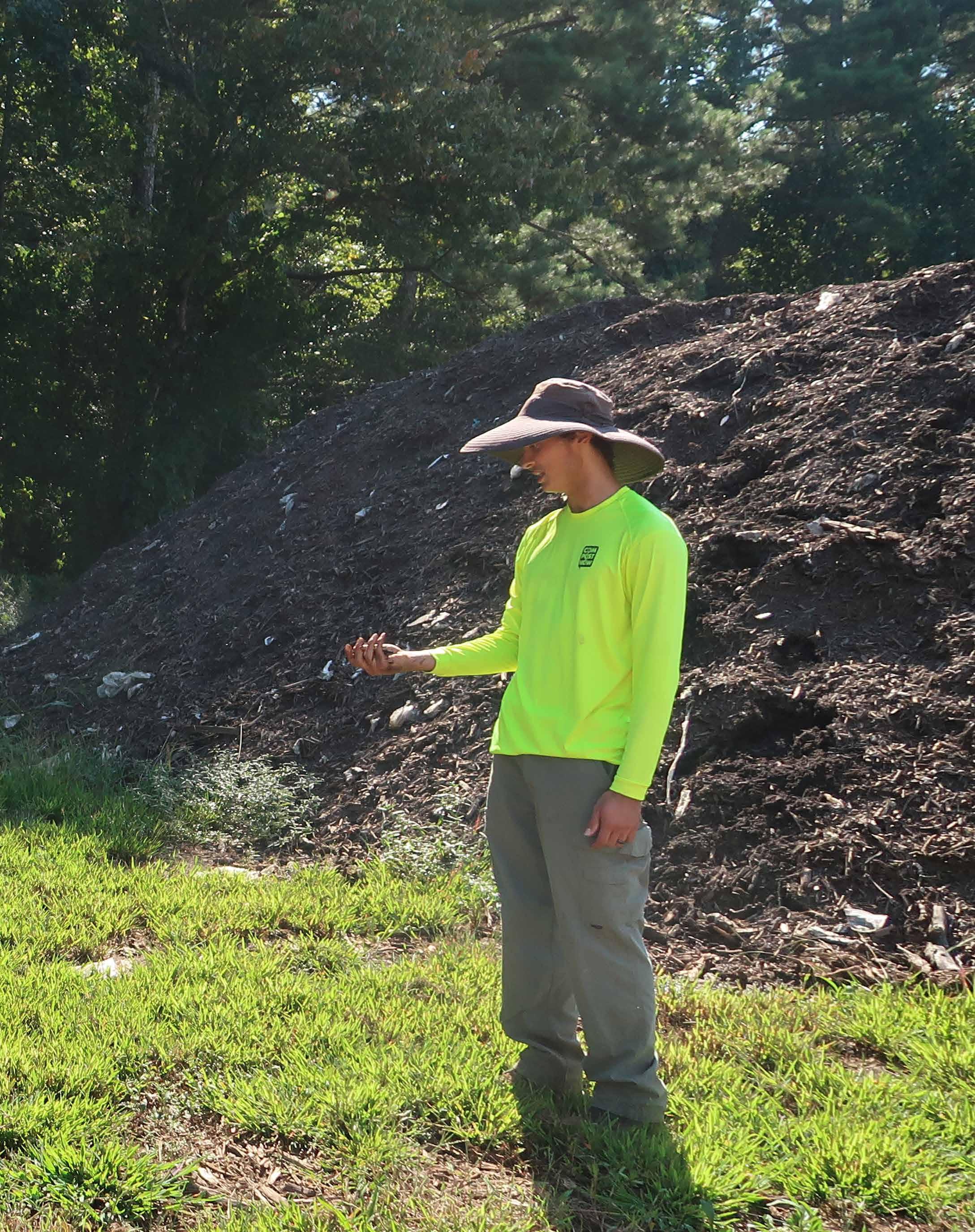
FPO
Appendix
UN Global Compact SDG Metrics
2021
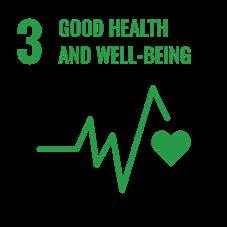




Launch of our regenerative workplace philosophy and benefits
2022
Maintain mandatory time off and initiated intentional hire of a Human Resources personnel to lead our regenerative philosophy.
2023
Hired Head of People, Jarrod Durrence, who has implemented a variety of benefits and policies that align with Better Earth’s Regenerative Workplace philosophy. Please reference page 16 for more information on Better Earth’s new policies, DEIA initiatives, and team growth.
Women currently make up 45% of the Better Earth team and 30% of Leadership.
Launched our PFAS-free Clarion Collection
Women make up 40% of the Better Earth team (5% decrease) and 33% of Leadership (3% increase)
Grew PFAS-Free Collection by 113% in total number of PFASfree SKUs offered
Launch of our Sustainable Packaging Specialist Program to educate our national sales team on the role of compostable packaging in the circular economy.
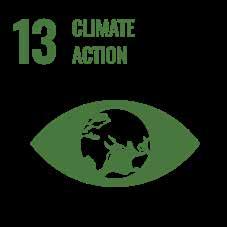
Continued investment in domestic collection to reduce supply chain emissions
Partnered with Georgia Drawdown Collaborative to join forces with local companies to reduce total statewide carbon emissions.
2+% growth in total domestic packaging sales, leading to an estimated 161 metric tons of CO2 in international supply chain emissions offset.
Women make up 38% of the Better Earth team and 35% of leadership.
Further institutionalized our commitment to sustainable business practices through initiating our Climate Smart Packaging program, completing the Life Cycle Assessment for our Farmer’s Fiber Collection and initiating one for EcoBamboo, and formalizing our Environment Management Plan signed by the entire executive team.
Continued expansion of domestic manufacturing, which is now doubling capacity.
Launch of our Climate Smart Packaging program, which represents a comprehensive strategy aimed at mitigating the carbon footprint throughout the packaging life cycle, encompassing sourcing, production, utilization, and disposal.
IMPACT REPORT 2023 | APPENDIX
1. Crippa, M., Solazzo, E., Guizzardi, D. et al. Food systems are responsible for a third of global anthropogenic GHG emissions. Nat Food 2, 198–209 (2021). https://doi.org/10.1038/ s43016-021-00225-9
2. Parker, L. (2022, March 2). The World’s nations agree to fix the plastic waste crisis. Environment. https://www.nationalgeographic. com/environment/article/worldnations-agree-to-fix-the-plasticwaste-crisis
81 %
-6 %
3. Arsenault, C. (2024, February 20). Only 60 years of farming left if soil degradation continues. Scientific American. https://www. scientificamerican.com/article/ only-60-years-of-farming-left-if-soildegradation-continues/ AGRICULTURE
25 % DISTRIBUTION & END OF LIFE MANUFACTURING
4. Figure 1. Study conducted in accordance with internationally recognized LCA frameworks (ISO 14040 and ISO 14044). To standardize across the comparison products, the number of plates that could be produced with one pound of each substrate was selected as the common functional unit, allowing comparison of climate change impacts attributable to products made from one pound of each substrate.
The comparison scope of the study covered the comprehensive cradle-to-grave scope for a single year of production, considering all relevant life cycle stages, from raw material extraction to product end-of-life disposal, using 2022 primary data provided by Better Earth’s Manufacturing Partner as a template for the competitor scenarios and modeled in SimaPro, using the database Ecoinvent 3.8. The comparison reports the same carbon footprint for each packaging type, measured as GHG emissions released to the atmosphere across the entire cradle-to-grave life cycle for each type of packaging in kilograms of carbon dioxide equivalent per pound, by type.
EMISSIONS BY
RESOURCES 43
FIGURE 1. FARMER’S FIBER
STAGE


Atlanta 715 Park North Boulevard, #100 Clarkston, GA 30021 (844) 243-6333 Chicago 7447 S Central Ave, Suite A Bedford Park, IL 60638 (844) 243-6333 @becompostable becompostable.com At Better Earth, our mission is to revolutionize sustainable foodservice packaging, championing a closed-loop system that enriches the planet and connects communities. From Field to Fork to Field CERT #10528603




























 Image Right: Atlanta Women in Sustainability Q1 Panelists
Image Right: Atlanta Women in Sustainability Q1 Panelists


 Image Right: Better Earth Team Members Volunteer at Truly Living Well Center for Natural Urban Agriculture Compost Lab
Image Right: Better Earth Team Members Volunteer at Truly Living Well Center for Natural Urban Agriculture Compost Lab








 Image Right: Better Earth Team Members Volunteer at Truly Living Well Center for Natural Urban Agriculture Compost Lab
Image Right: Better Earth Team Members Volunteer at Truly Living Well Center for Natural Urban Agriculture Compost Lab









 Image Right: Taylor Voraphongphibul educating Better Earth Team Members and brokers on commercial composting, at a CompostNow facility
Image Right: Taylor Voraphongphibul educating Better Earth Team Members and brokers on commercial composting, at a CompostNow facility








